Day 10 we left Kensington Tented Camp for a day in the Serengeti on our way to our last camp, Olakira Tented Camp. What a day it turned out to be. Very soon after entering the Park we began to see and hear hundreds, then thousands, of moving Zebras, now accompanied by an equal or greater number of Wildebeests. The Zebras were very loud, some braying and some barking. As far as we could see, for hours, the grasslands were full of moving animals, heading north toward better grass and water. The numbers were amazing.
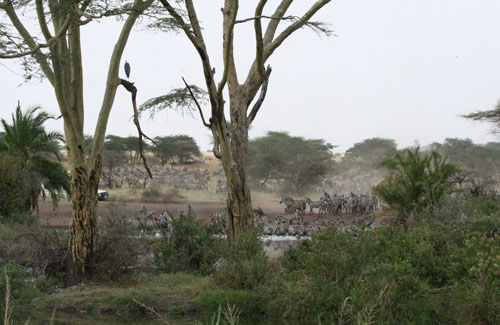
I have no idea how many we saw on the move that day, but it had to be in excess of 100,000 of each of the two species. This was what we most hoped to see in the Serengeti, and we were very fortunate to be in the right place at the right time to witness this great migration of large animals through the African grasslands.
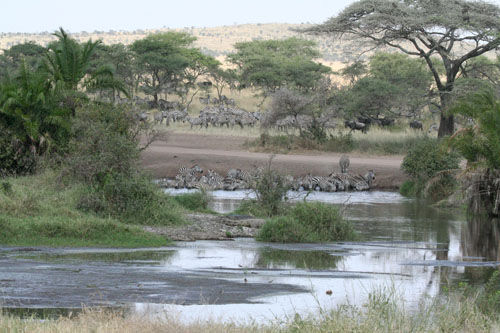
The Wildebeests were early in their birthing process here in the Serengeti, unlike at Ngorongoro Crater, where a few days earlier most of the females had calves in tow. Here, very few had yet given birth. One of the early arrivals, wet from the birth process and with umbilical cord attached, was up and running with its mother, who still carried the afterbirth with her as she joined in the march northward.
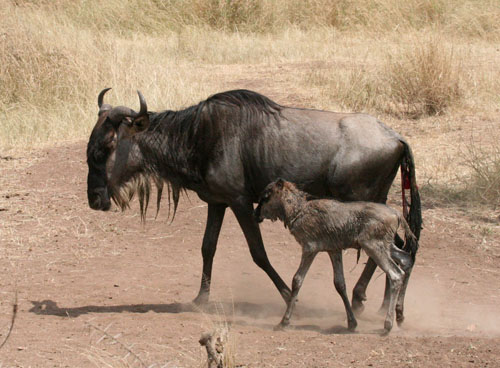
Interspersed with the Zebras and Wildebeests were Elephants, Hippos, our only Crocodile of the trip, a couple of Leopards in their usual tree habitat, Warthogs,
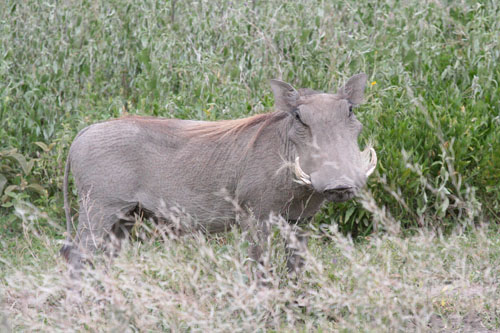
Lions, Townsend’s and Grant’s Gazelles, Topi, Hartebeests, a few Waterbucks, our first diminutive Steenbok (about the size of the little Dik-Diks that we had been seeing on a regular basis).
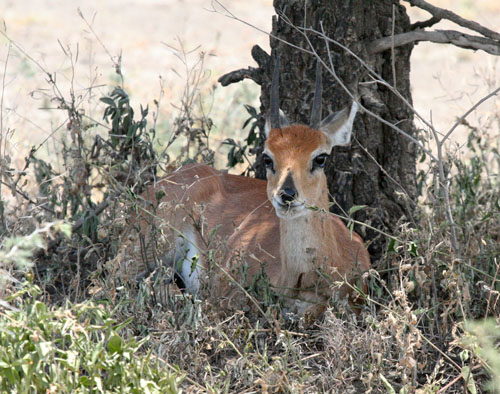
This is prime time for the predators. Among the most interesting of these were 3 beautiful Cheetahs, probably 3 brothers, that were on the hunt.
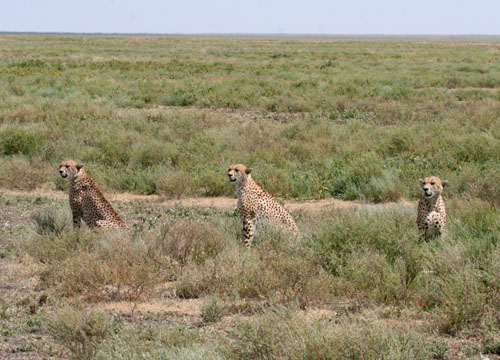
We watched for quite some time as they stalked a small herd of Wildebeests, with no success. As they watched their intended prey move away, the brothers decided to take a break and bask in the morning sun of the Serengeti.
We were able to get a close-up view of both Lesser and Greater Flamingos feeding in a shallow lake.
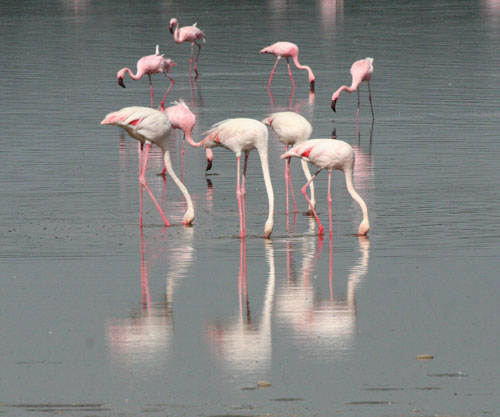
A pair of Bat-eared Foxes were enjoying the late afternoon sun along the dirt track.
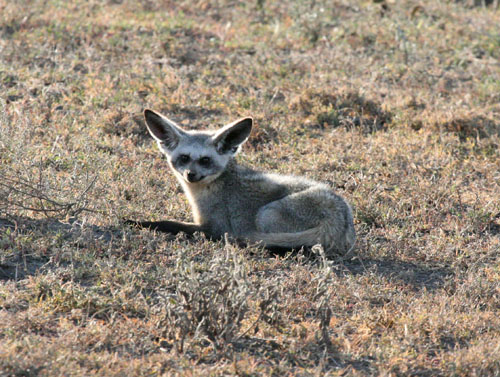
This Two-banded Courser was walking through the grass.
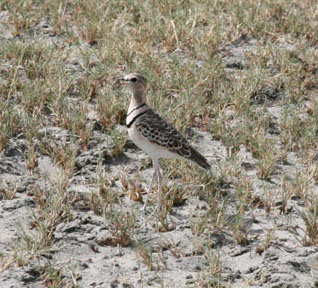
We saw all 3 of the Sandgrouse species that can be found in northern Tanzania. This one is a Yellow-throated Sandgrouse, which was the most numerous that we saw.
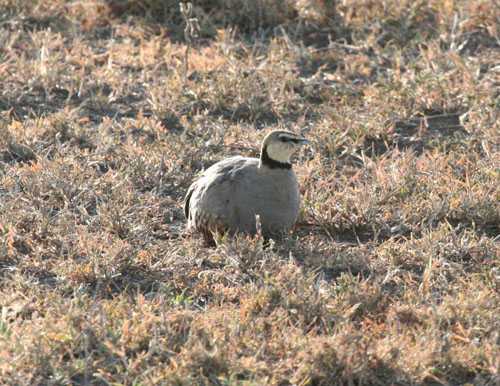
The Sandgrouse family is especially interesting to me, especially their ability to find water in deserts, and to survive in such harsh, dry conditions.
We arrived quite late in the day at Olakira Camp. We were pleased with this facility. This picture shows the “shower” system: a couple of bags suspended above the tent, which would, upon our request, be filled with hot water by camp personnel.
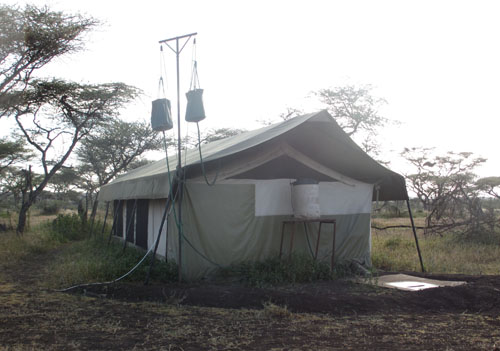
The next day we saw more of the same types of animals that we had seen on our trip the prior day. On our final morning we focused on trying to find Elands, Africa’s largest antelope. This was the one remaining species of antelope that we had not been fortunate enough to find on the previous days. Although Elands had been seen in the area in prior weeks, it seems that it had become too dry for them and they had moved on and we did not find any.
Our flight from the Serengeti to Arusha was late, and as a result we were very tight on time to transfer by car from Arusha to make our flight at Kilimanjaro. With the help of one of the Kensington drivers, Jimmie, we made it with a few minutes to spare.
We were very pleased with our Safari in Tanzania. The people were cordial, the country side was spectacular and the bird and animal life was abundant and at times dramatic. Our lodging was suitable and the food was excellent. We recommend it to others.
